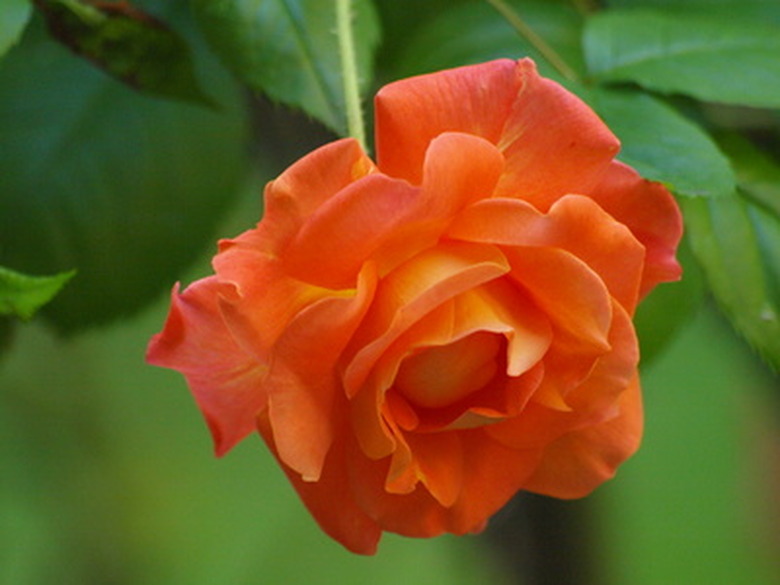My Rose Bush Is Not Growing
Roses are one of the highlights of any traditional flower garden. However, depending on your local climate and your growing conditions, it can be a tricky proposition to keep your roses growing vigorously and producing attractive, sweet-smelling blooms. To improve the health of stunted or sluggish rose bushes, make sure that you're meeting all of their basic needs, from the right amount of water to proper soil conditions to adequate pruning.
Nutrients
If your roses appear stunted, they might suffer from a nutrient deficiency. In some cases, you provide plenty of nutrients to the soil, but a highly alkaline pH balance keeps the roots from absorbing the necessary nutrients. Roses should have slightly acid soil, from 6 to 6.5, to maximize their nutrient intake. If your soil's pH is in the right range, try adding nitrogen-rich fertilizer. Nitrogen deficiency is especially common when straw or sawdust serve as mulch. A nitrogen deficiency makes for lackluster growth, slightly yellowed foliage and a spindly appearance overall. Gauge your addition of nitrogen carefully, as excessive nitrogen will favor foliar growth at the expense of flower production.
- Roses are one of the highlights of any traditional flower garden.
- However, depending on your local climate and your growing conditions, it can be a tricky proposition to keep your roses growing vigorously and producing attractive, sweet-smelling blooms.
Soil and Moisture
Improper soil texture and moisture level are major causes for poor growth. Roses should receive at least 1 inch of water per week. For the most effective irrigation, give roses a deep watering, soaking the soil down to a depth of 12 to 18 inches. Watering the right amount with the wrong soil texture can still result in thirsty or drenched plants. If soil is too sandy, the large particle size will challenge the rose's roots' ability to absorb water. In clayey soil, the roots will become waterlogged.
Location
Planting your rose bush in the wrong spot can severely impede healthy growth. Roses require six to eight hours of full sun per day, ideally with most of these hours in the morning. Excessive direct sunlight in the afternoon can prove too warm and threaten to burn or bleach out the plant's delicate leaves and flowers. If your rose bush is too close to your fruit trees or veggie patch, you may have exposed it to insect pests and diseases.
- Improper soil texture and moisture level are major causes for poor growth.
- If soil is too sandy, the large particle size will challenge the rose's roots' ability to absorb water.
Care and Maintenance
Roses with proper watering, soil texture and sun exposure generally shouldn't fail; however, it's possible for a rose to show sluggish or stunted growth because of improper pruning and general maintenance. Each spring, before the buds come out of dormancy but once they begin to swell, prune back your rose bush to cut down on old growth. Familiarize yourself with the recommended pruning practice for your particular type of rose bush. In general, rose bushes thrive from the removal of about one-third of the old growth.
